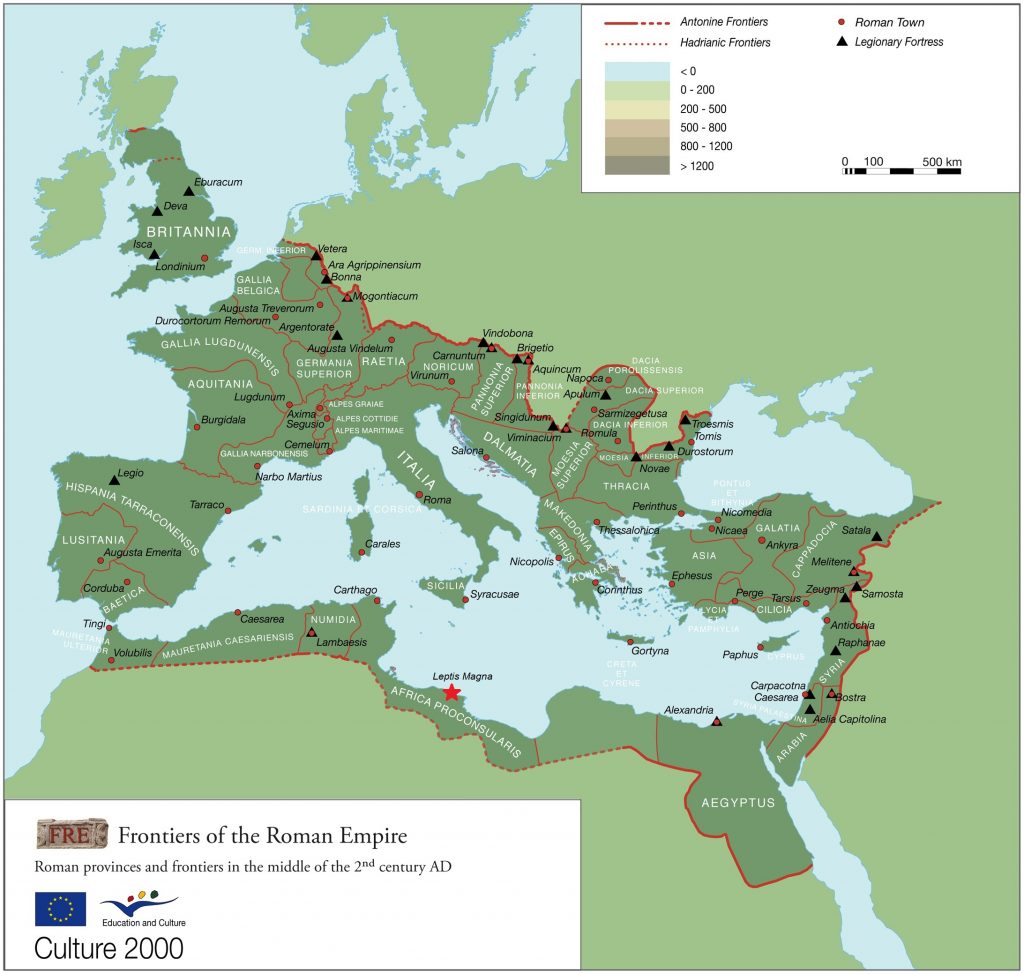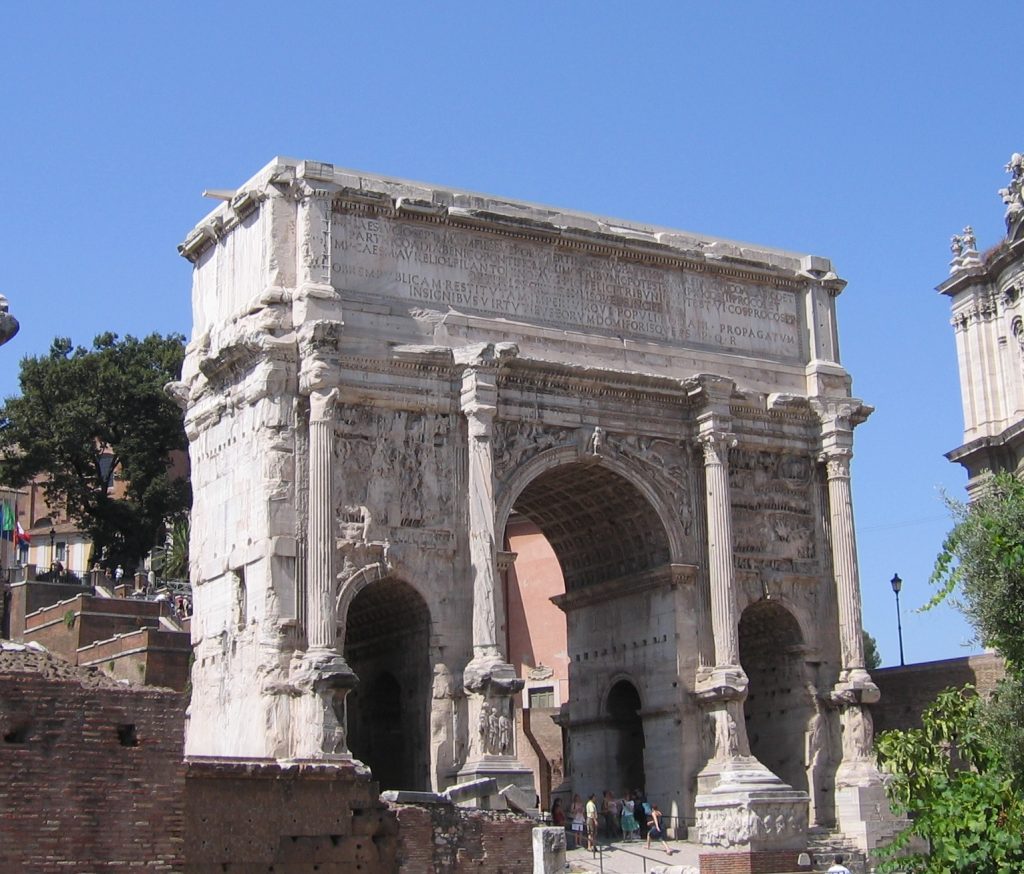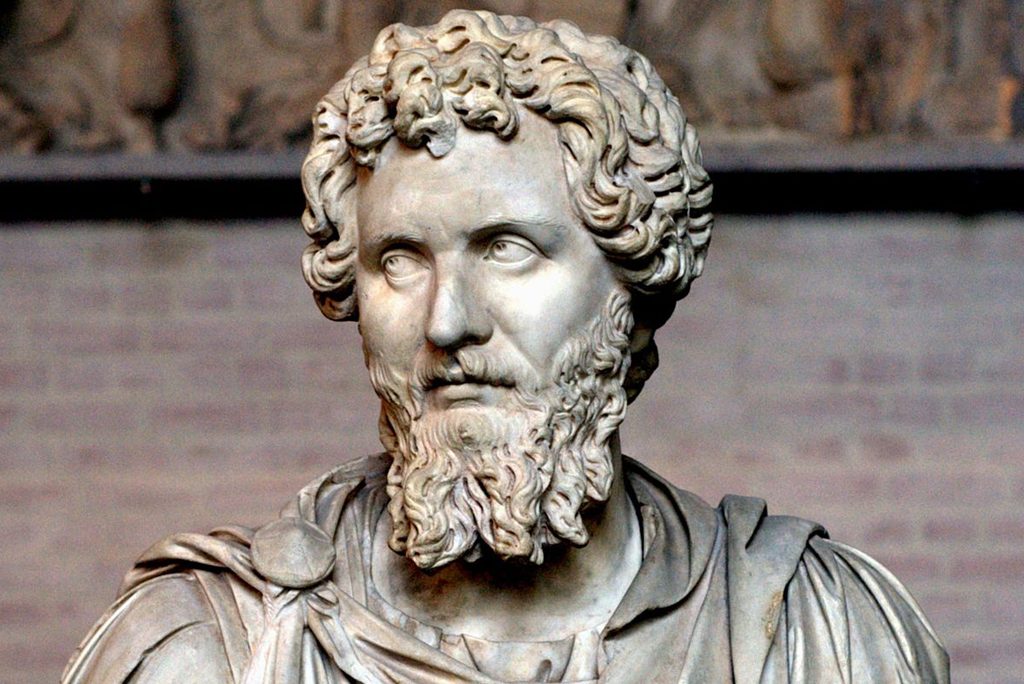Born and brought up in Libya, the Roman Emperor Septimius Severus is sometimes referred to as Rome’s Black Emperor. But did you know he also came to Scotland?
Septimius Severus
Septimius Severus was born into a provincial aristocratic family in AD 145. He grew up in the Roman town of Leptis Magna, in modern-day Libya. Sources from the time refer to his multilingual ability, suggesting he spoke Latin, Greek and Punic. As an adult, he went to Rome to embark on a senatorial career.
In the early AD 190s he became governor of Upper Pannonia, a Roman province which included parts of modern-day Austria and Hungary.

Map of the Roman Empire. Upper Pannonia is shown as Pannonia Superior.
AD 193
The Roman Emperor Commodus (who you may remember from the movie Gladiator) was murdered in AD 192. This plunged the Empire into a struggle for succession.
Severus was proclaimed Emperor by his soldiers at Carnuntum in April 193. He completed the defeat of his rivals the following year.
Severus in Britain
Severus spent much of his reign travelling throughout the Roman Empire, spending only a few years at its heart in Italy.
Classical sources tell us there was trouble in Britain. This gave Severus the excuse he needed to remove his sons from a life of luxury in Rome. By then in his 60s and suffering from gout, it was to be his last campaign.

This triumphal arch in Rome was erected in AD 203 to commemorate Severus’s victories in Parthia, but once he became emperor he spent little time in the city to see it
After basing himself in York, we are informed that Severus invaded Caledonia. Archaeological evidence includes forts at Cramond (north-west of Edinburgh), and at Carpow (to the west of Newburgh, on the south side of the River Tay).
We also have evidence of a number of large marching camps, including the largest ever recorded in Europe. This would have held:
- Septimius Severus
- His entourage
- A considerable baggage train
- The largest Roman military force seen in Scotland
Marching camps are difficult to date due to the nature of their occupation. They may have been used for only a few days or weeks, leaving behind less of the debris we see in more permanent bases. However, it is plausible that some date to Severus’s campaigns.
One of these, a 166-acre camp in the Scottish Borders known as Trimontium, represents the latest Roman occupation at that site. A stretch of another is visible as an upstanding earthwork at Black Hill just outside the fort at Ardoch.

Remains of the Roman temporary camp at Ardoch
And finally…
Septimius Severus died in York in February 211, leaving the conquest of Scotland incomplete. One of his sons murdered the other and returned to Rome to claim the Empire, but was himself murdered some six years later. Hadrian’s Wall continued as the Roman frontier in Britain, and Scotland remained unconquered.
As October is Black History Month, we thought it important to share this story as an example of the ethnic diversity in Roman Britain. We can’t verify the exact tone of his skin, but we can say Severus was born and brought up in Libya, he was the first Roman Emperor from Africa, and he came to Scotland.
If you would like to learn more, The Hunterian Museum is doing a series of short Insight Talks for Black History Month.
As part of the series Dr Louisa Campbell, an HES-supported post-Doctoral fellow, will speak on ‘Diversity at the Northern Limit of the Roman Empire’. You can attend her talk at 1pm on Tuesday 24 October 2017.

